Basement is Leaking Where The Floor Meets The Wall
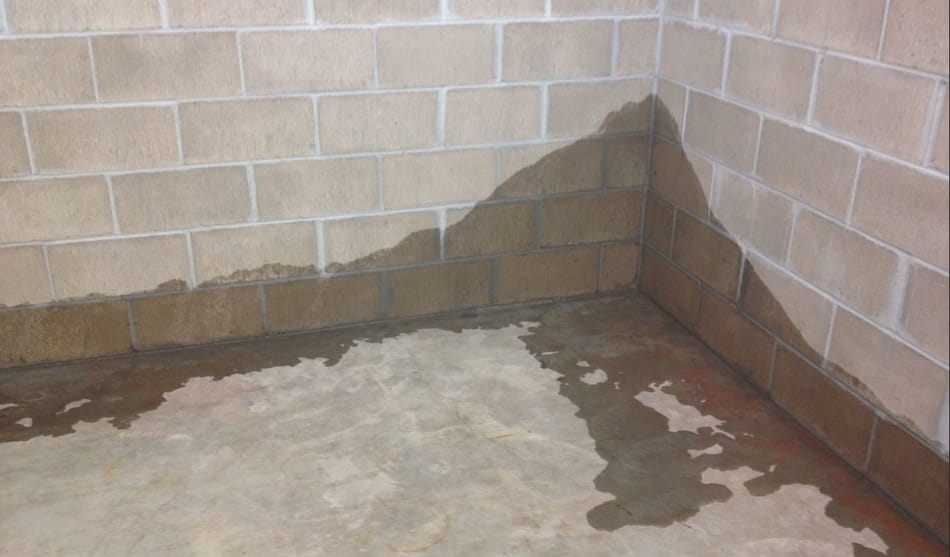
Having a wet basement is not a good thing not only because it feels and smells nasty but because it poses a great risk to the home’s value. Also, basement moisture is dangerous because it can ruin floors and walls, but it can also damage roofing and encourage mold.
Getting water out of the basement walls and fixing this issue are two very important things that need to be done to protect the value of the home together with the health of your family. In this article, we’ll talk about the leaking problems in the basement, and how to fix this. So, let’s start!
Why Basement is Leaking Where The Floor Meets The Wall? Water that is leaking in the basement where the floor meets the wall is due to hydrostatic pressure. Standing water located under the foundation of the house starts to rise up and seep through small cracks. This causes a leak in the basement between the walls and the floor.
Hydrostatic pressure is the pressure that is created by standing water. This usually happens when the soil that surrounds the basement is saturated with a large amount of rain or melted snow. For example, one cubic foot of water is around 62 pounds (28 kg) which means that thousands of pounds of water surround the foundations of your house under great pressure. So it should come as no surprise that at some point, water finds its way in and begins to penetrate your basement foundation through gaps and cracks.
If you want to learn more about basements, be sure to read How to Keep Basement Dry Without Dehumidifier?
Reasons Why There Is Gap Between Basement Wall and Floor
Plenty of old basements have a gap between the places where the walls and the floors meet around the foundation. This gap is also known as a cove joint. The most common reason why this gap between the floor and the walls occurs is because of the way how basement foundation got poured.
In the first phase of the building, the basement is the first excavated to the desired depth, with the foundation footings being made along the edge as a narrow channel called a keyway. Once the footings had settled, concrete was poured on the walls, which allowed them to be perfectly aligned once they were finished. Only after the walls have hardened and dried is it time to pour the floor into the basement. The Cove joist arises due to the fact that the floor and walls are poured separately.
The most common reasons why leaks appear in the basement where the wall meets the floor are the following:
- There is no Interior or Exterior waterproofing
- Basement waterproofing is damaged
- Not sufficient floor drainage
- There is no sump pump
- Weeping Tile is clogged
1. No Exterior/Interior Waterproofing
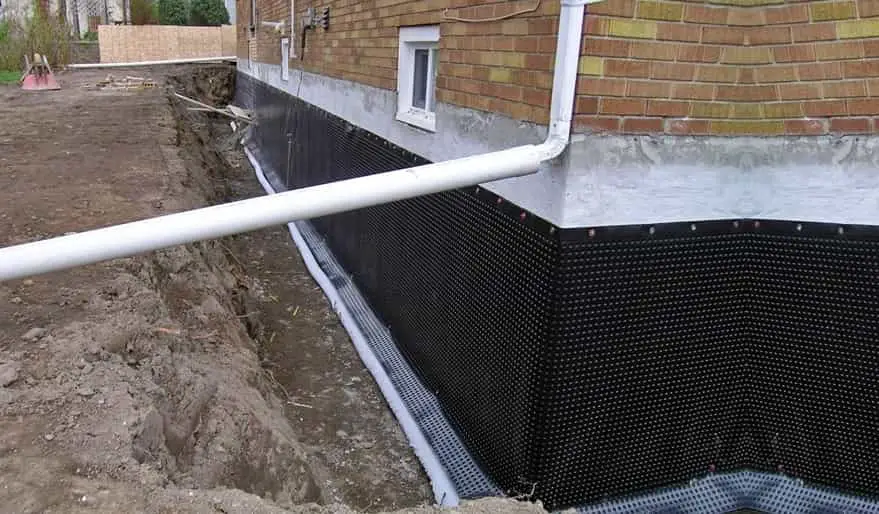
If you live in a home that is old, there is a high probability that you have minimal waterproof protection on the basement walls. Many old homes, as waterproof protection on block walls, have only a thin layer of tar that can be easily damaged over time.
If the walls of the foundation inside (and sometimes outside) are not coated appropriately with a waterproof membrane, the water will find a weak point through which it will penetrate into the basement. The water usually first passes through smaller holes in the walls somewhere along the joint that connects the walls and floor.
2. Basement Waterproofing is Damaged
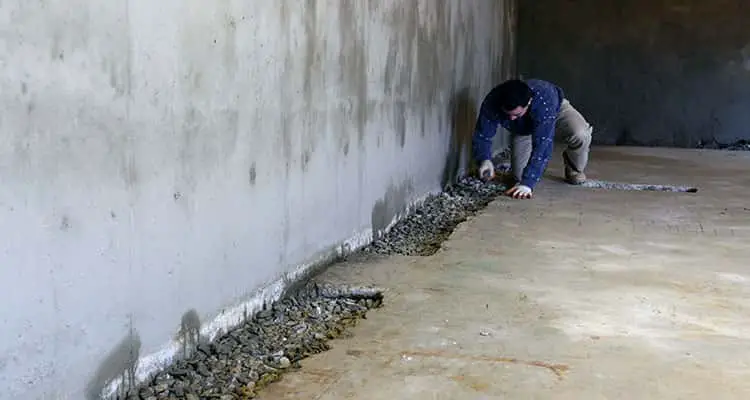
If you notice a water leak on the basement walls despite having waterproof material, there is a possibility that the material has been damaged by water under the walls. You should know that the regulations for building houses stipulate that waterproof membranes must be installed only beside the base of the wall.
Also, regulations do not oblige membranes that are above the footing. Therefore, it is not uncommon for the water to find its way from beneath the waterproof layer and begin to penetrate the floor/wall joint.
If you are sure that your waterproof material is not damaged, there is a high possibility that, for some reason, the sump pump is not working as it should. You can easily check if this is the case and then fix it. It is important to know that if the sump pump does not work as it should, water is not drained out of your house, which means it accumulates under the walls of the house.
If you want to learn more about sump pumps, then read this article; Sump Pump Running But Not Pumping? Explained.
3. Floor Drainage Is Insufficient
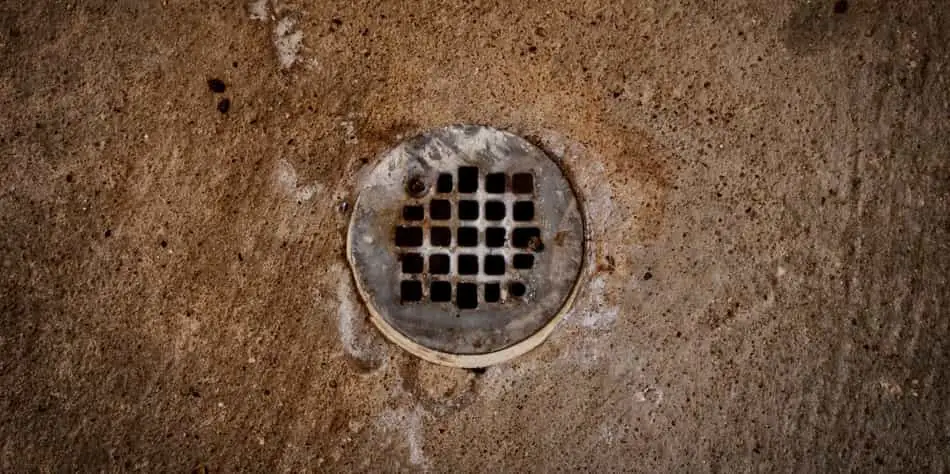
It is also possible that the soil under your house does not have sufficient drainage, which is often the case with hard clay-based soils. If so, the sump pump needs to be merged into an interior or exterior drain pipe and have holes that allow the drainage of soil below the house.
Use logic. If the water under your house does not have appropriate drainage, it will find an exit and penetrate between the walls and the floor in your basement or through a basement slab.
4. There Is No a Sump Pump
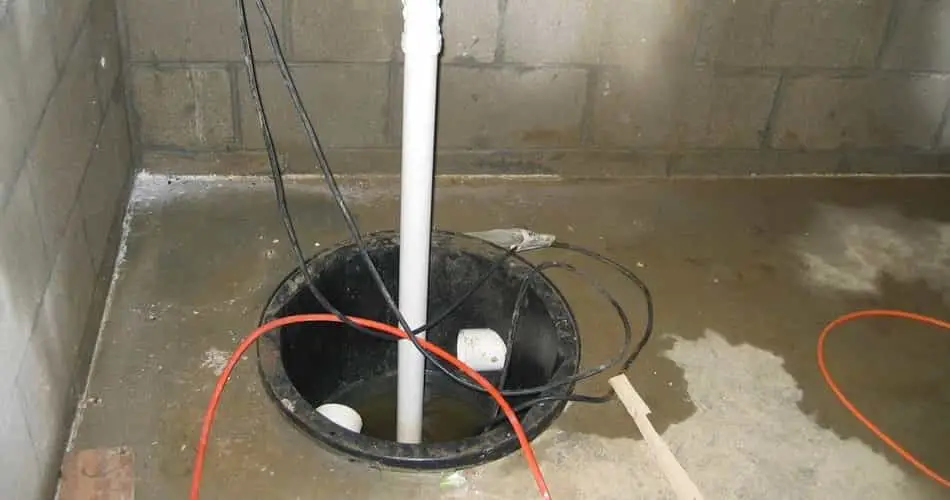
Having a good waterproof material along the basement walls is a must and a great move for any homeowner, but it won’t help much if your house doesn’t have a sump pump. A sump pump is built-in a few feet beneath the footing grade. It collects the water that is around the house perimeter and pumps it to a set location distanced from the home.
When you notice water penetrating under the basement walls of your house and there is no sump pump, the conclusion is that probably the reason for your problem is the lack of the same. Keep in mind that no house is fully protected from water intrusion if it does not have a built-in sump pump that performs drainage work outside the reach of the house. If you don’t have a sump pump, don’t worry. It is easy to install without disturbing the exterior of your home.
5. Weeping Tile Is Clogged
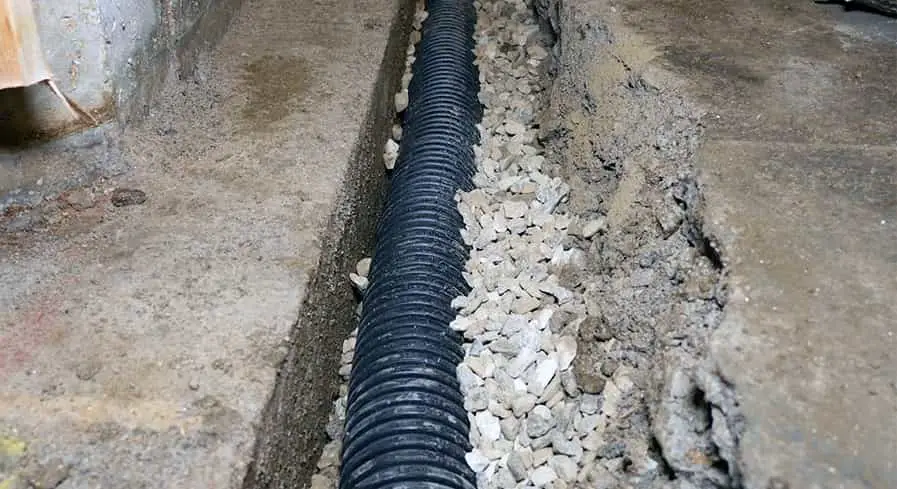
Weeping tile is a simple black perforated pipe made of plastic that has a mesh “sleeve” that is placed on top to prevent debris and dirt from entering the pipe. It sits beside the footing, and it wraps the whole perimeter of the house. One end goes down the footing of the house, and it is attached to a sump pump in the interior.
Weeping tile is often clogged, especially when you have an older tile type without a built-in mesh sleeve. Try to unclog it. The best way to do so is by pressurizing water jets. But that is not recommendable when you have a water problem in the basement. To avoid extra water, you should dig up that pipe and put in its place a new one, that is resistant to clogging.
Methods to Waterproof The Cove Joint
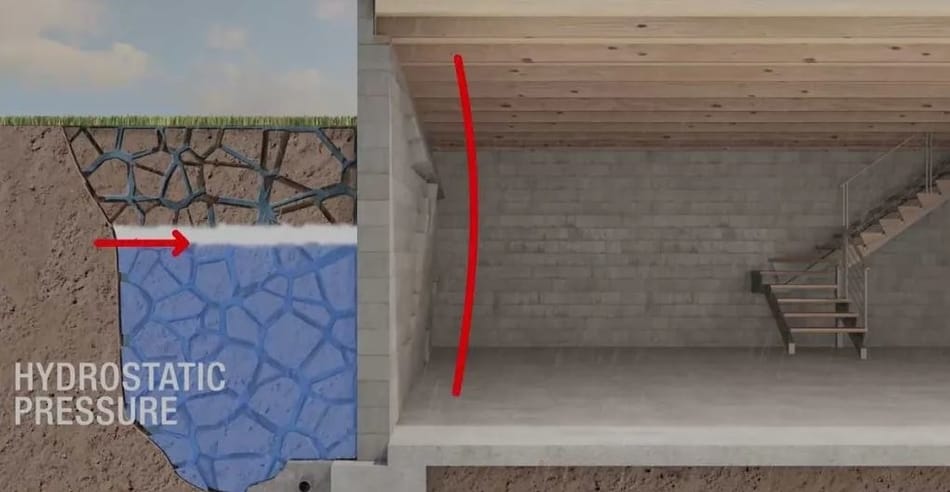
Now that you know much more about cove joint and why water can leak from it, it’s time to seal it up and prevent water leakage in the future. Many homeowners contemplate sealing in this situation with the help of hydraulic cement or some other similar material. But before you start, you need to know that this sealing method will not solve your leak problem in the long run.
Think about it. Leaking water that bothers you, as we explained earlier, causes hydrostatic pressure that is so strong that it can push water through even the smallest hole in the wall. If you put a sealant over the top of the cove joint, you will only get the water to look for another suitable entrance to your home or, under strong pressure, lift up the sealant and continue to leak where it did before.
The right way to waterproof your cove joint is to install a tile drain system framed in washed stone below the floor. It is the system that you can install on the exterior or in the basement interior.
Interior: The usual way that most people use to build a drain tile system is to do it on the interior. The method involves removing the floor from the wall foundation by 18 inches to dig a trench that is close to 12 inches wide. Then you should add a layer of washed gravel to the trench. A perforated drain pipe needs to be installed on top to follow the entire trench line that is connected to a sump pump pit.
After, more washed gravel should be added to the trench until the drainpipe is covered up. In the end, pour concrete is added for sealing and hiding the system out of the eye site. In this way, there will be no damage done, to the landscape or in the house.
When you install this waterproofing solution, hydrostatic pressure will be relived and water will be directed to a sump pump. Sump pump will discharge it away from the house foundation.
Exterior: An exterior tile drain system will work the same. It helps to relieve hydrostatic pressure by redirecting that water outside of the house perimeter. To build this type of draining system, you will have to dig out the perimeter that surrounds the foundation of your home. This move makes the exterior options far more expensive and not as much attractive among homeowners.
Before you start digging, you will have to remove everything that surrounds the foundation perimeter, including gardens, porches, shrubs, stairs, patios, sections of a driveway, masonry work, and even an AC unit. But if your basement is a functional part of the house, or if it is a living space like an apartment, you do not have much choice but to install the tile drain system from the exterior part of the house.
Cost of the Interior Drain Tile System
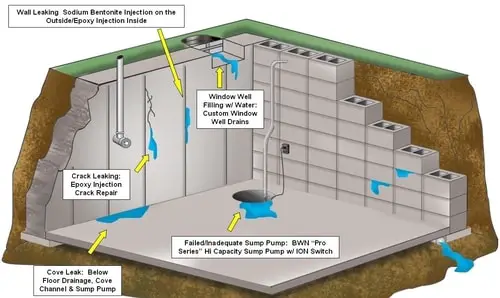
The best way to waterproof your basement is to install a drain tile system in the house interior. It is a cheaper option and will perform more effectively than the drain system installed on the house exterior. Bonus is that it can be usually built in the home within one or two days.
Project Cost: Price ranges from $7,000 to $16,000
Cost of the Exterior Drain Tile System
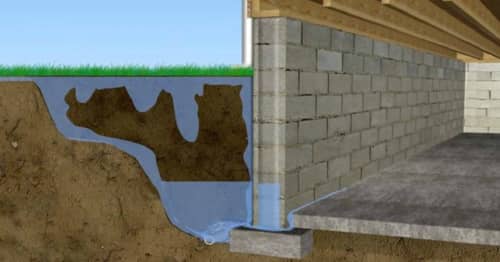
An exterior drain tile system is a more costly option. In addition to being high costly, it also puts your home at bigger risk. When you are building in the system, the ground that surrounds the foundation while digging will be removed which can potentially damage the foundation. An exterior drain tile system is recommended to be installed in a new home, in the first construction phase.
Project Cost: Price ranges from $15,000 to $37,000
What Is the Lifespan of a Drain Tile System?
If you have installed this drain tile system well, it should last for the next few decades. The long life span of the drain tile system, as well as the weeping tile, is ensured by modern building materials that are in everyday use today. But you can also rely on a clay-style older weeping tiles system for a long time. They should not clog or have broken parts for quite some time after construction.
Drain Tile System Regular Maintenance
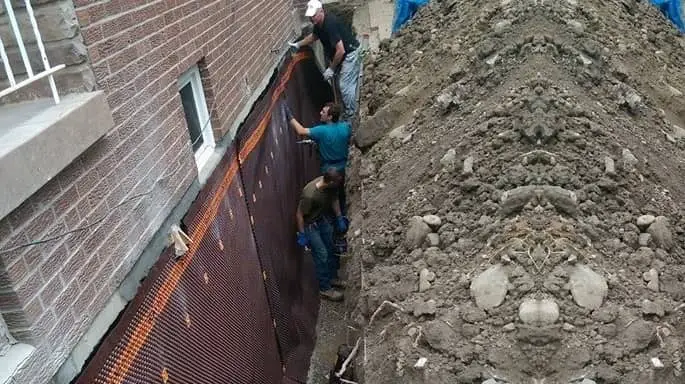
There is always the possibility that even though the drain tile system was installed during the construction of your house, water will still penetrate into your basement. This is because even this system requires maintenance after some time.
How does the problem come about? When the exterior drain tile system is installed, it is placed along its entire length along the house’s foundation on a gravel base, and then gravel is placed again on top of the pipe. The top layer of gravel is covered with a layer of filter fiber, which can become clogged over time. There were also situations when the fiber filter was not built in during the system’s installation. But then, after a long time, the pipes themselves can become clogged.
Servicing the exterior tile drain system is not an easy task since it requires excavating the area around the house’s foundation. That is why in these cases, a new system is installed rather than an old one serviced, although this is always a possibility.
Also, if you want to dig out a basement, be sure to read How to Dig Out a Basement in an Existing House?
Call A Professional To Fix This Issue
When you notice water leaking through the cove joint, the person who can best help you is a waterproofing basement contractor. He will certainly be able to determine what is causing the problem and what needs to be done to stop the water leak permanently.
Final Thoughts
When you have a problem with cove joints that are leaking in your basement, several methods can help you solve the problem. However, the choice of method depends on the size of your budget. The best permanent solution is exterior waterproofing, but you must know that it is also the most expensive.
Doing waterproofing on the inside is a cheaper option, but if you choose it you need to know that there will always be a possibility that water will leak from somewhere. If you like DIY projects and you are good at their realization, you can try to solve the problem with cove joint leak yourself. If you have been doing the work yourself, keep a close eye on the situation over the course of the entire 12 months in the first year to make sure you have solved the problem effectively.
